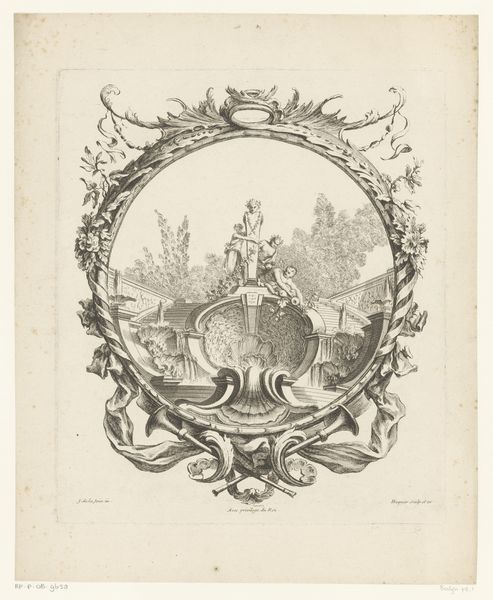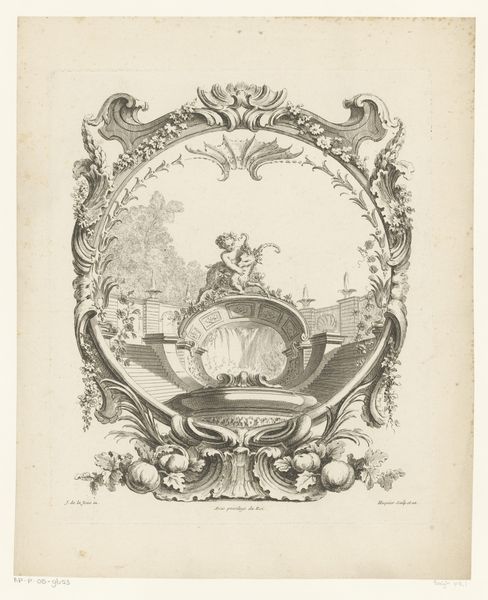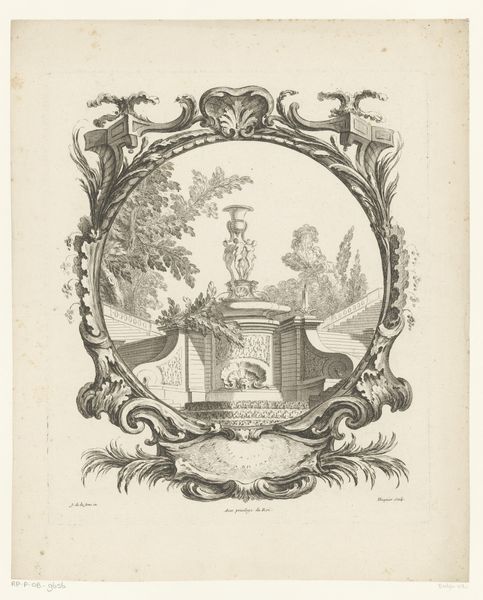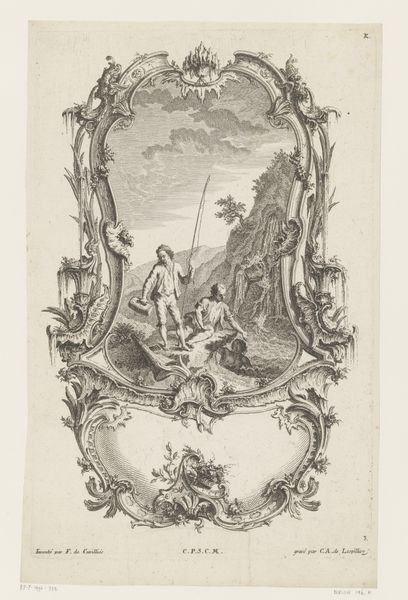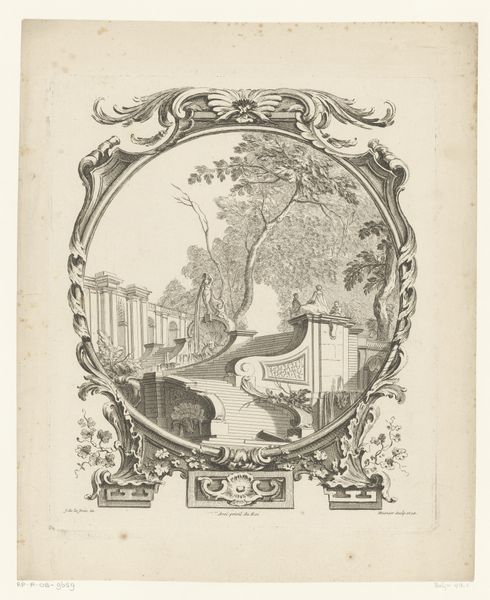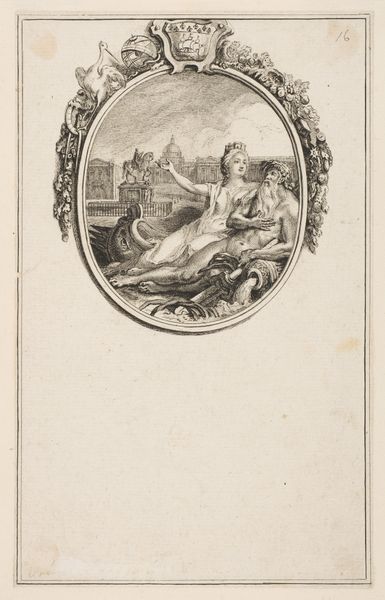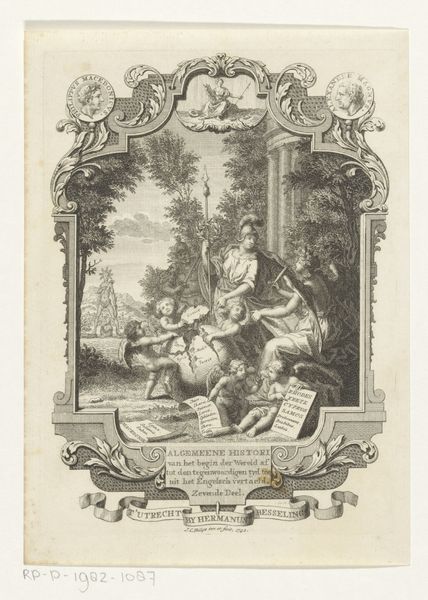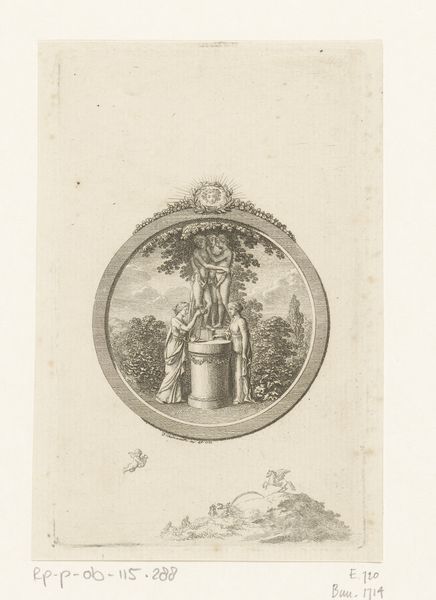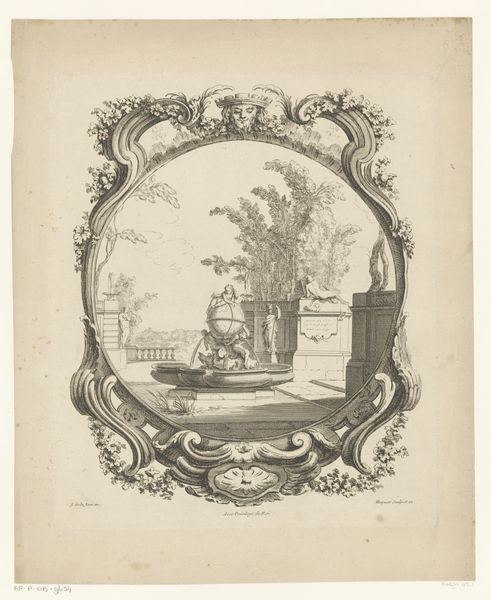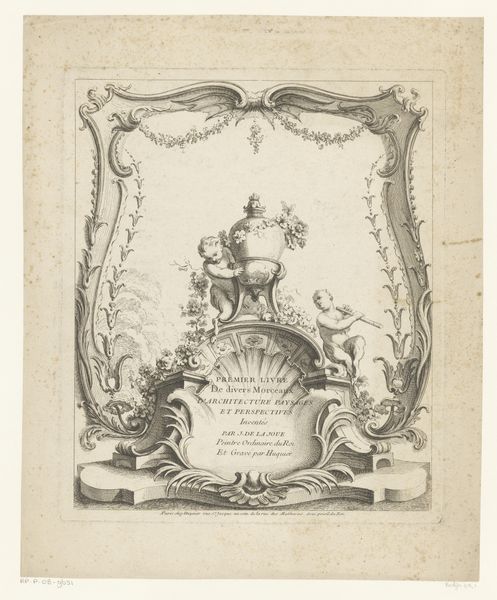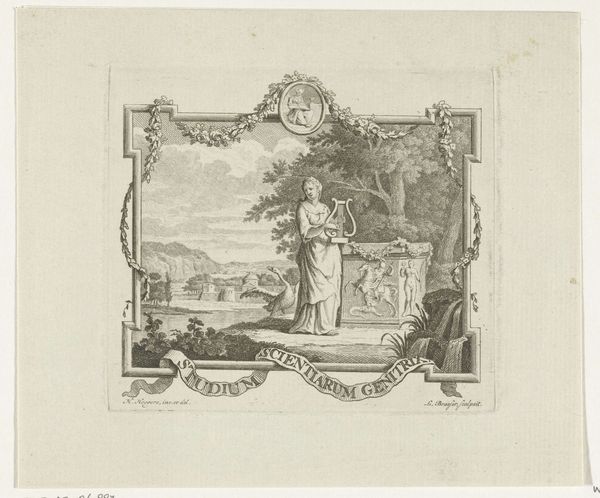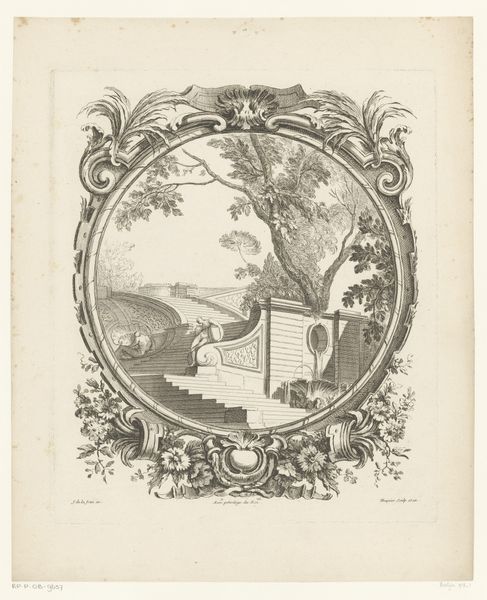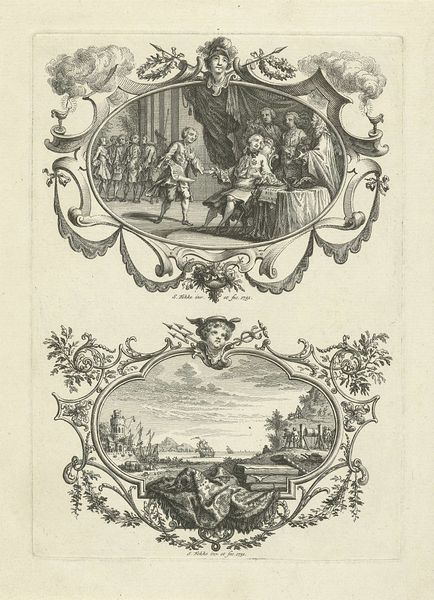
engraving
#
baroque
#
old engraving style
#
landscape
#
figuration
#
personal sketchbook
#
genre-painting
#
engraving
Dimensions: height 320 mm, width 273 mm
Copyright: Rijks Museum: Open Domain
This print, titled "Man en vrouw bij balustrade," was made by Gabriel Huquier sometime before 1772. The print's fine lines come from the process known as etching, where a metal plate is coated with a waxy material, and then scratched away to expose the metal. The plate is then immersed in acid, which bites into the exposed areas. This creates delicate lines that hold ink, and allow the image to be transferred onto paper. Etching allowed for a level of detail that was difficult to achieve with engraving alone, democratizing the process of art production. This image, with its carefully depicted garden scene, gives the impression of effortless refinement. But the etching process itself speaks to the division of labor in 18th-century printmaking. While Huquier may have been responsible for the initial design, skilled artisans would have been needed to prepare the plate, etch the image, and pull the prints. So, next time you look at an etching, remember that it represents both artistic vision, and also a network of skilled hands.
Comments
No comments
Be the first to comment and join the conversation on the ultimate creative platform.
